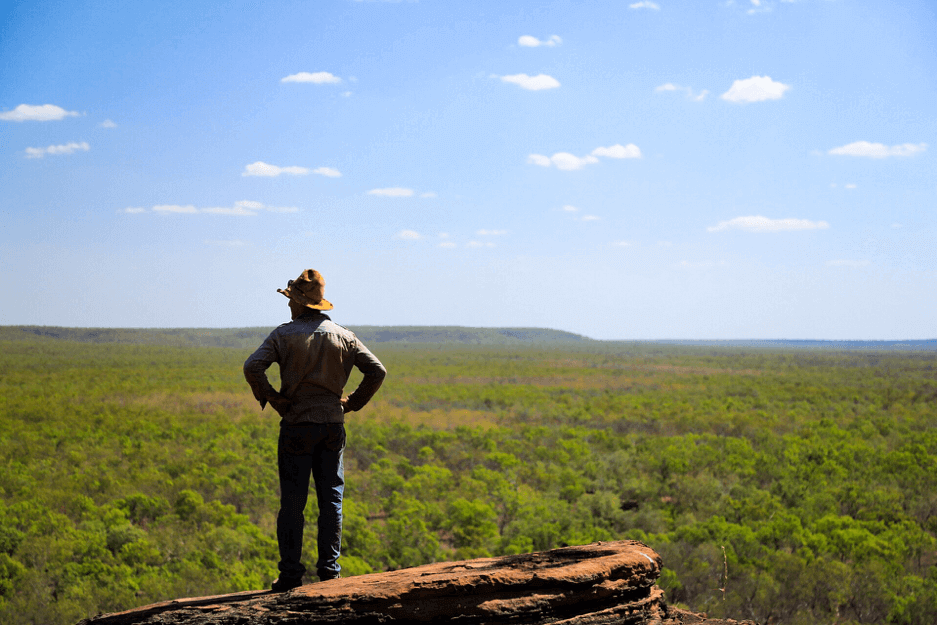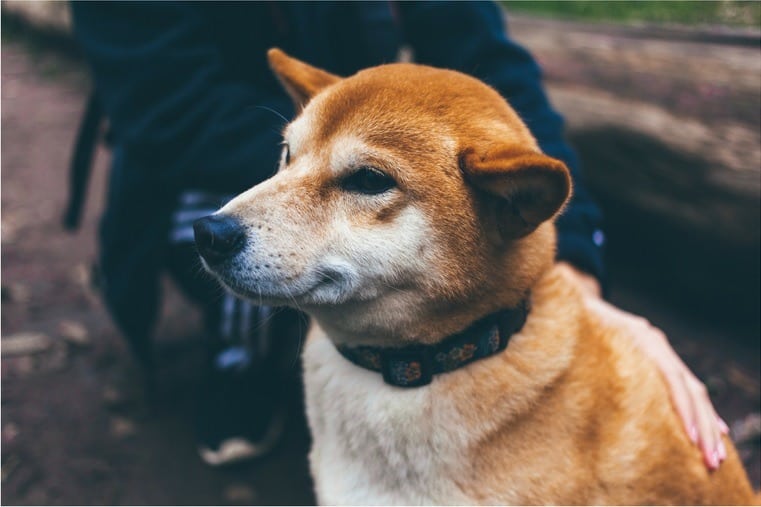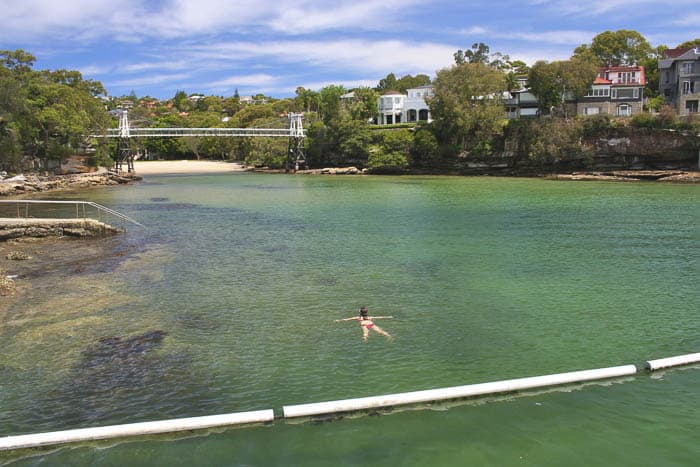Destination Feature-Fraser Island Part Two
In last weeks post, we listed a few of our favourite spots to visit on Fraser Island. This week we’ll finish up our ‘top ten list’ with a few more ecological gems, as well as information on the best places to camp on this magnificent island.
6. Champagne Pools
Located just north of Indian head, the Champagne Pools are a spectacular group of rock pools on the beach. The Champagne pools are so named because of the waves that crash over the rocks and fill the pools with fizzy and bubbly water. It’s like your very own natural jacuzzi, and is even more enjoyable with a real champagne in hand (or so I’m told)!
The Champagne Pools are located just north of Indian Head, along the famous 75 Mile Beach
7. Valley of the Giants
The majestic forests in the Valley of The Giants display some of the most ancient trees on Fraser Island. Sadly, some of the oldest and biggest trees are now just stumps, due to logging in the area between 1863 and 1991 (in fact, these trees were used to build the Suez Canal in Egypt, and to rebuild the London Docks after WW2).
You can still view some spectacular Satinays, Tallow Woods and Kauri Pines-some of which are more than 1200 years old and over four metres wide. I still find it astounding that trees of this size can thrive on nothing but sand on this island.
8. Indian Head
Known to the Aboriginals as ‘Tuckee’, Indian Head was named by Captain Cook after the inhabitants of the island (back in the late 1700’s it was acceptable to call indigenous people ‘Indians’).
Indian Head is a well known lookout point, offering spectacular views of the beach to the north and south. On a clear day, you can see sharks, dolphins, manta rays and turtles swimming and hunting in the water below.
During the months of June-November, it’s also a wonderful vantage point to view the Humpback whales on their annual migration, many of which congregate around Hervey Bay and the island for days. They migrate from Antarctica to mate and give birth in the warm tropical waters, and enjoy relaxing and playing in the waters around the island. It’s a sensational sight!
Indian Head is also renowned for it’s tailor fishing. Vehicle access around the head is via loose sand tracks, and caution is advised.
9. The Pinnacles
The Pinnacles are sacred grounds to the local Butchulla women (the native inhabitants of the island), and are considered to be a place of good luck. These spectacular sand cliffs are a photographers delight, particularly in the soft light of dawn.
Coloured by oxides and decayed vegetation, the cliffs show off a wide spectrum of colour, from the softest pinks and golds to the deepest reds and oranges. The cliffs have been sculpted over thousands of years by natures most artistic masters; the wind and water.
The Pinnacles (Credit: Ian Stehbens)
10. Hammerstone Sand Blow
For a ‘Mad Max’, moonscape-style setting, you can’t go past the Hammerstone Sand Blow. Encompassing some of the highest dunes on the island, which reach up to 240m above sea level, these dunes are just amazing.You literally feel as though you’re in another world while you’re there.
The dunes are home to many ancient middens which are easily visible along the well tracked paths near the car park.
The sand blow is what has created, and what is now slowly engulfing, Lake Wabby-the emerald green freshwater lake that was mentioned in our last post. You need to track over these dunes to get to the lake, and it’s surrounded on all sides by lush green forest. It’s the perfect spot to see everything that Fraser has to offer. Just make sure you bring some decent shoes, water, sunscreen and a hat-it can get really hot here.
Camp Sites on Fraser
The Deans thoroughly enjoying Fraser!
For comprehensive and up to date information on camping on the island, alerts, and park specific conditions, check out:
https://parks.des.qld.gov.au/parks/fraser/camping.html
There are both National Park and Private camp grounds an Fraser. You can camp at one of the six national park campgrounds on the Eastern beach at Waddy Point and Dundaburra, on the Western beach at Wathumba, or inland at Central Station, Lake Boomaniin and Lake Allom.
Basic facilities are provided including showers, picnic tables, barbecues, toilets and tap water. We recommend taking a collection of $1 and 50c coins so you can spoil yourself and have a hot shower after a long day in the sun.
Generators are not allowed and we suggest you take insect repellant.
Bookings are essential for Waddy Point, Central Station, One Tree Rocks beach camping zone and Dundaburra. You can book your campsite in advance by going to https://environment.des.qld.gov.au/ and following the links. Dundaburra campsite is also suitable for caravans and camper trailers.
We suggest that you lock all food and rubbish in your vehicle or campground lockers, and secure eskies with tight straps to discourage dingoes. Fines apply for not complying to basic dingo-safe camping practices.
You can also camp at signed places along the beach, although no facilities are provided, and campers must remove all of their own rubbish. You can collect your camping tag and information pack before you reach the island.
Your camping tag must be attached to your tent/trailer where it is easily visible by rangers. These are available at the ferry terminals on the mainland. All campers must have a camping permit, which is just $4 per person per night. All proceeds from the camping permits are used to protect and prolong Fraser Islands natural environment.
Private camp sites are available at Dilli Village and Cathedral Beach, and range in price from $25 for unpowered sites to $40 for a powered site.
Food, gas refills, ice and fuel are available at Happy Valley, Eurong, Cathedral Beach, Orchid Beach and Kingfisher Bay. Mobile phone reception is intermittent at best, but there are public telephones located around the island. There is no medical assistance on the island, so take a well stocked first aid kit.
DANGERS and other Information
The deadly Irukandji jellyfish has been found off Fraser Island beaches in recent years
– The beach that runs along Frasers east side is not safe for swimming. Besides being a known haven for sharks, it’s unpatrolled, with strong rips and undertows that can sweep even the strongest swimmers out to sea. There have even been reports of people getting stung by the deadly Irukandji jellyfish. Other marine stingers inhabit the area in summer-so really, you’re best off swimming in one of the islands lovely lakes, streams, or in the Champagne Pools.
– Know your tide times. A bogged vehicle can quickly get engulfed by the incoming tides in Fraser. Ideally, you should only drive within a two hour period either side of low tide.
– Avoid driving on the shifting dunes or in soft spots. And watch out for incoming planes! Their landing strip is on the beach, which is also the main thoroughfare. They have right of way at all times.
– Be dingo safe! Most dingoes pose no threat-they are naturally shy and steer clear of people. When we were there (we stayed at Eurong), we noticed a lot of dingoes came out to hunt and scavenge after everyone had gone to bed and switched off their lights. They usually sit quietly to survey their territory for prey, and are often much closer than you think.
– Do not feed them-this encourages aggression, and many have been culled for this reason. Lock your food away, make sure your tent is properly secured, don’t walk alone at night, and watch your kids at all times.
-If you encounter an aggressive dingo, stand tall and fold your arms across your chest. Slowly back away-do not run or wave your arms. Confidently call for help, and wait until they leave before continuing on your way. Report any negative incidents to a QWPS ranger as soon as you can.
-For more information on dingo safety, click here
Fraser Island is a magical place to see and explore, and one of the most beautiful and diverse islands in the world. Fraser will be one of the most memorable holidays you will ever have, and, if experienced with a respectful attitude, it will be for all the right reasons!
Have you been to Fraser Island? What was your favourite spot?
Words by Katie James







